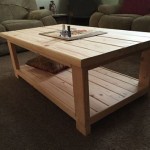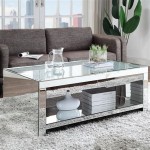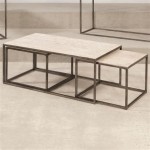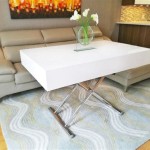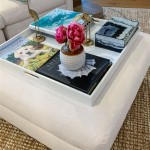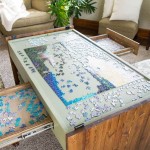How To Make Table Cover At Home Easy Without Sewing
Creating a table cover at home without sewing offers a practical and cost-effective solution for protecting furniture, adding aesthetic appeal to a room, or quickly preparing for a special event. This method bypasses the need for sewing machines, needles, and thread, relying instead on alternative techniques that are simple to execute and require minimal tools and skill. The key to a successful no-sew table cover lies in careful material selection, precise measurements, and the application of appropriate bonding or securing methods.
The absence of sewing does not equate to a compromise in quality or aesthetic. A well-executed no-sew table cover can appear just as polished and professional as a sewn version. This article will detail various techniques to create a table cover without sewing, addressing material choices, preparation steps, attachment methods, and finishing touches, providing a comprehensive guide for achieving a durable and visually appealing result.
Material Selection and Preparation
The selection of appropriate materials is crucial for the success of a no-sew table cover. The choice of fabric will influence the drape, durability, and overall appearance of the finished product. The type of adhesive or bonding method selected must also be compatible with the chosen fabric.
For a no-sew project, fabrics that are less prone to fraying are highly recommended. Felt is an excellent choice due to its non-fraying nature and availability in a wide range of colors. Fleece is another suitable option, offering softness and warmth. Vinyl or oilcloth provides a waterproof and easily cleanable surface, ideal for outdoor or high-spill environments. If using a fabric that is prone to fraying, such as cotton or linen, additional steps will be required to address the raw edges. The weight of the fabric is also a significant factor. Heavier fabrics tend to drape better and provide more protection, while lighter fabrics are easier to handle.
Before proceeding with any cutting or bonding, the fabric must be properly prepared. This involves washing and drying the fabric according to the manufacturer's instructions to pre-shrink it and remove any sizing or finishes. Ironing the fabric is also necessary to eliminate any wrinkles or creases, ensuring a smooth and even surface for cutting and bonding. Accurate measurements are critical to ensure the table cover fits the table correctly. Measure the length, width, and height of the table. For a table cover that drapes to the floor, add twice the height to both the length and width measurements. For a shorter drape, adjust the added height accordingly. It is always preferable to add a few extra inches to the measurements to allow for adjustments. Using a ruler or yardstick, accurately measure and mark the fabric according to the calculated dimensions. A fabric marker or tailor's chalk is recommended for marking the fabric.
Cutting the fabric with precision is essential for a professional-looking outcome. Use sharp fabric scissors or a rotary cutter and cutting mat for accuracy. When cutting, follow the marked lines carefully, ensuring a straight and even edge. If using a rotary cutter, work on a large cutting mat to protect the work surface. Take care to maintain a consistent cutting motion for a smooth and clean cut. After cutting the fabric to the desired size, inspect the edges for any imperfections. Trim any loose threads or uneven sections to ensure a neat and tidy appearance. Depending on the chosen fabric and desired effect, the edges may need to be addressed to prevent fraying or create a finished look.
No-Sew Edge Finishing Techniques
Addressing the raw edges of the fabric is a critical step in creating a durable and aesthetically pleasing no-sew table cover. Several techniques can be employed to prevent fraying and create a finished look without the need for sewing.
One of the simplest methods is using fabric glue or fusible tape to create a hem. Fold the edge of the fabric over by approximately 1/2 inch to 1 inch, depending on the desired hem width. Iron the fold to create a crisp crease. Apply fabric glue along the folded edge, ensuring even distribution. Fold the edge over again to create a double hem, enclosing the raw edge within the fold. Press firmly to adhere the fabric together. Alternatively, fusible tape can be used to create a no-sew hem. Place the fusible tape between the two layers of fabric and iron over the tape, following the manufacturer's instructions. The heat will melt the adhesive in the tape, bonding the fabric layers together. This method is quick and easy and provides a clean and durable hem. For fabrics that are prone to fraying, consider using a wider hem for added protection.
Fray Check or liquid seam sealant can be applied to the raw edges of the fabric to prevent fraying. This product penetrates the fabric fibers and hardens, preventing them from unraveling. Apply Fray Check to the edges of the cut fabric using the applicator tip provided. Allow the sealant to dry completely before handling the fabric. This method is best suited for fabrics with a tight weave. For more loosely woven fabrics, multiple coats may be required. While Fray Check is effective at preventing fraying, it can sometimes leave a slightly stiff or discolored edge. Test the product on a scrap of fabric before applying it to the entire table cover to ensure it does not negatively affect the appearance of the fabric.
Pinking shears can be used to create a decorative and functional edge that minimizes fraying. Pinking shears have serrated blades that cut the fabric in a zig-zag pattern. This pattern reduces the surface area of the edge, making it more difficult for the fabric to unravel. Run the pinking shears along the edge of the fabric, following the cut line. While pinking shears can effectively minimize fraying, they do not completely eliminate it. For fabrics that are particularly prone to fraying, additional measures, such as applying Fray Check or creating a hem, may be necessary. The zig-zag edge created by pinking shears can add a decorative touch to the table cover. This method is particularly suitable for fabrics with a simple or rustic aesthetic.
Another option is to use bias tape to bind the edges of the fabric. Bias tape is a pre-folded strip of fabric that is cut on the bias, allowing it to curve and conform to the shape of the edge. Purchase bias tape that complements the color of the fabric. Apply fabric glue or fusible tape to the back of the bias tape. Position the bias tape along the edge of the fabric, overlapping the raw edge. Fold the bias tape over the edge of the fabric, enclosing the raw edge within the tape. Press firmly to adhere the tape to the fabric. This method provides a clean and professional-looking finish. The bias tape can also add a decorative element to the table cover. Experiment with different colors and patterns of bias tape to create a unique and personalized look.
Securing the Table Cover to the Table
Once the fabric has been cut and the edges have been finished, the final step is to secure the table cover to the table. This can be achieved using various methods, depending on the desired level of permanence and the type of table.
Table clips are a simple and effective way to hold the table cover in place. These clips attach to the edge of the table and grip the fabric, preventing it from slipping or blowing away in windy conditions. Choose table clips that are appropriate for the thickness of the table edge. Attach the table clips evenly around the perimeter of the table, spacing them approximately 12 to 18 inches apart. Ensure the clips are securely fastened to the table and the fabric. This method is ideal for outdoor use or in situations where the table cover needs to be easily removed and reattached. Table clips are available in a variety of styles and materials, including metal, plastic, and decorative designs.
Double-sided tape can provide a more secure and semi-permanent attachment. Apply strips of double-sided tape to the underside of the table cover, along the edges. Position the table cover on the table, ensuring it is aligned correctly. Press firmly on the areas where the tape is located to adhere the table cover to the table. This method is suitable for indoor use or for situations where the table cover is not frequently removed. When removing the table cover, gently peel it away from the table, taking care not to damage the surface. Test the tape on a small, inconspicuous area of the table before applying it to the entire surface to ensure it does not leave any residue or damage the finish.
Elastic straps or bands can be used to create a fitted table cover that stays securely in place. Measure the circumference of the table. Cut a length of elastic that is slightly shorter than the circumference. Attach the elastic to the underside of the table cover, along the edges, using fabric glue or fusible tape. Ensure the elastic is evenly distributed around the perimeter of the table cover. This method is ideal for round or oval tables. The elastic will create a snug fit that prevents the table cover from slipping or sliding. The tension of the elastic can be adjusted to achieve the desired level of tightness. This method provides a clean and professional-looking finish.
For a more decorative and secure attachment, consider using ribbon or ties. Cut several lengths of ribbon or fabric ties, approximately 12 to 18 inches long. Attach the ribbons or ties to the underside of the table cover, along the edges, using fabric glue or fusible tape. Position the table cover on the table, ensuring it is aligned correctly. Tie the ribbons or ties around the table legs or underneath the table top to secure the table cover in place. This method adds a decorative touch to the table cover. The ribbons or ties can be coordinated with the color of the fabric or the decor of the room. This method allows for easy adjustment of the table cover and is suitable for a variety of table shapes and sizes.

No Sew Table Linens The Sewing Room Channel

Table Cover Making How To Make A Simple Dining Full Tutorial For Beginners
Diy No Sew Tablecloth Repurpose A Sheet Bubbly Life

Diy Fixable Round Table Cover With Old Saree Any Type Of Fabric Make At Home Easily Tablecovers

Diy How To Make A No Sew Ruffle Tablecloth For Less Than 10

How To Make A Reversible Table Runner For Beginners

Simple Table Cover How To Make A Pleated Pink Full Tutorial For Beginners

How To Make A Tablecloth

Easy Diy Bandana Tablecloth The Gracious Wife

How To Make A Tablecloth With Pictures Wikihow
Related Posts

